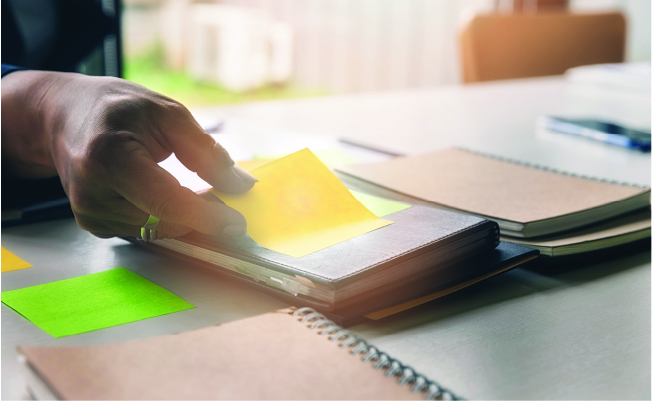
Overdraft Consideration Details
October 23, 2023
General Provisions: Overdraft Consideration (OC) is for consumers who inadvertently overdraw their checking account. Rather than automatically returning the item(s) unpaid for nonsufficient funds, we will consider payment of the item(s) that overdrew the account. OC is provided as a courtesy to consumer accounts in good standing and is not intended to be used on a regular basis. An account is considered in good standing if the customer makes deposits consistent with past practices, is not in default with any other deposit account or loan obligation with the bank, brings the account to a positive balance for one full business day after bank processing at least once every fifteen (15) business days, does not have any legal, administrative order or levy against the account, and has the ability to repay the overdrawn account balance. OC is applied to all eligible accounts at account opening.Overdraft Limit and Criteria: OC can provide up to $1,000.00 in overdraft protection for the following eligible transactions: debits, checks, recurring Point of Sale (POS) transactions, automatic withdrawals, and Automate Clearing House (ACH) transactions based on the criteria identified below. There is not a guarantee that all overdraft items will be paid up to the specified amount. Overdraft Consideration uses the following criteria to determine the specific daily overdraft amount that may be allowed and still have the items paid. Each level of criteria is assigned a dollar value ranging from $0.00-$200.00. Each day, your account is reviewed in all of these categories to determine the maximum value allowed to overdraw and have the items paid, rather than returned to the merchant.
These values may change daily.
Length of time the account has been open (up to $200.00)
Average collected balance over the past year (up to $200.00)
Frequency of direct deposits (up to $200.00)
Frequency of over the counter deposits (up to $200.00)
How many consecutive days the account has been overdrawn (up to $100.00)
How many items the bank has returned due to overdrafts in the past year (up to $100.00)
Note: Charges for covering overdrafts, as well as the amount of the overdraft items, will be subtracted from the limit disclosed above.
Account Services and Charges: The maximum daily overdraft charge for a consumer will be limited to four (4) items. No overdraft charge will be assessed if the overdraft balance is $5.00 or less. A $30.00 charge is assessed if an item is paid and will display on your statement as Overdraft/NSF charge. A $30.00 charge is assessed if an item is returned not paid and will display on your statement as Charge to Return Check. A Consecutive Day overdraft charge of $7.00 is applied after the account has been overdrawn for five (5) consecutive business days and discontinues after the fifteenth (15th) consecutive business day. These charges are subject to change daily and may be found in our Account Services and Charges disclosure.
Item Processing Order: SNBT will first apply credits to your account and then debit items will be posted in the following order: teller withdrawals, ATM/POS (PIN-based) transactions, Debit Card purchases (signature-based), automatic withdrawals (preauthorized/internet/phone), and checks.
Cancellation: You may request to decline OC at any time by using one of the following notification methods. Sign and return the enclosed disclosure, call SNBT Customer Support Department at 800-924-1732, or visit one of our locations in person and we will promptly opt you out of OC.
Understanding your Account Balance for Overdrafts: Your checking account balance has two kinds of balances: the “Current Balance” and the “Available Balance”.
Current Balance – The total amount of funds in your account.
Available Balance – Your available balance takes into account holds that have been placed on deposits and pending transactions (such as pending Debit Card transactions) that we have authorized but that have not yet posted to your account.
We use your current balance when determining whether a transaction will cause your account to overdraw and for assessing an overdraft charge. You can review both balances when you review your account online, by phone, or using your mobile app.
Example #1 of an Overdraft Charge for Insufficient Current Balance
Your current account balance is $100.00 and the following items post to your account:
Check #1 - $60.00 current balance = $40.00
Check #2 - $60.00 current balance = -$20.00
This scenario would incur one (1) overdraft charge assessed to your account as the current balance is -$20.00 and the charge will also be deducted from your account, further reducing your current balance.
Example #2 of Overdraft Charges for Insufficient Current Balance
Your current balance is $1,000.00 and the following items post to your account:
Teller Withdrawal - $480.00 current balance = $520.00
Preauthorized withdrawal - $125.00 current balance = $395.00
ACH withdrawal - $147.00 current balance = $248.00
Check #1 - $552.00 current balance = -$304.00
Check #2 - $150.00 current balance = -$454.00
This scenario would result in two (2) overdraft charges assessed to your account as the current balance is -$454.00 and the charges will also be deducted from your account, further reducing your current balance.












